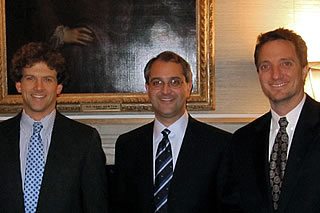
"Visual neurons encode things in the world. They are a map, a representation. It's not a leap to imagine that neurons in the motor cortex should behave like neurons in the visual cortex, relating in a faithful way to external parameters, but things aren't so concrete for movement. Our main finding is that the motor cortex is a flexible pattern generator, and sends rhythmic signals down the spinal cord."
In monitoring electrical brain activity of motor-cortex neurons, the researchers found that they typically exhibit a brief oscillatory response. These responses are not independent from neuron to neuron. Instead, the entire neural population oscillates as one in a beautiful and lawfully coordinated way.
The electrical signal that drives a given movement is therefore an amalgam - a summation - of the rhythms of all the motor neurons firing at a given moment. Mark Churchland:
"Each neuron behaves like a player in a band. When the rhythms of all the players are summed over the whole band, a cascade of fluid and accurate motion results."
n the new model, a few relatively simple rhythms explain neural features that had confounded science earlier. According to the scientists, the brain has had an evolutionary goal to drive movements that help us survive and rhythm is a basic building block of movement.
© Drummerszone.com 2002-2025 Drummerszone.com is a Musicpublishers.nl website.
Oops, you're not logged in!
The more you like
the more you get!
